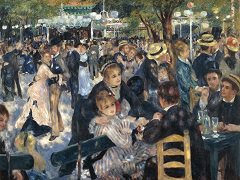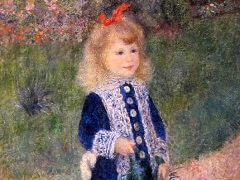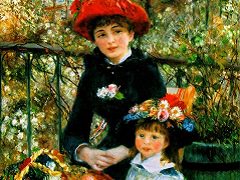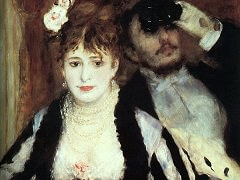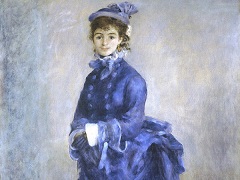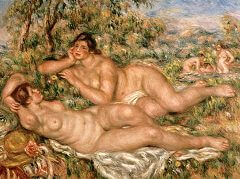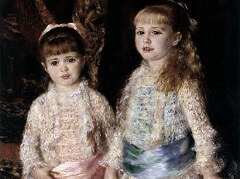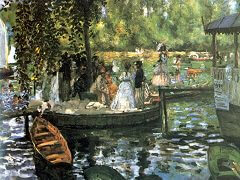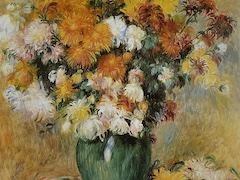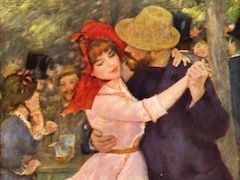Young Girls at the Piano - by Pierre-Auguste Renoir
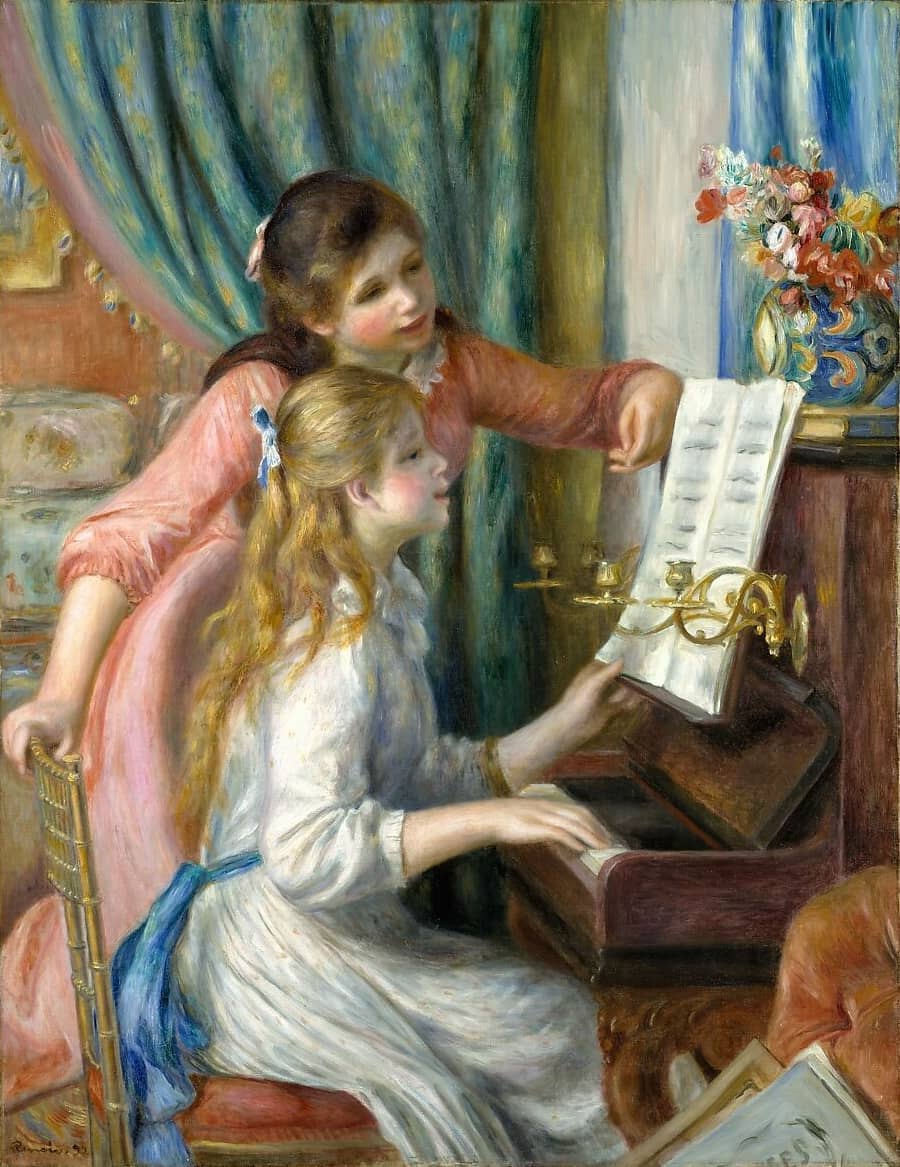
In this picture, Young Girls at the Piano, we have a detailed and felicitous account of the surroundings of French family life at the end of the nineteenth century, and yet it does not break down into a clutter of things asking for attention. We see the piano with its candle holders, the chairs, the tasseled draperies, and in the room beyond we get a glimpse of a stuffy but inviting confusion. We may study the costumes and the hairdos the girls wear, and on the piano is a typical "old-fashioned" bouquet of the time.
This documentary character of Renoir's earlier work seldom conflicts with its qualities as art. The scene before us is bathed in a soft glow of light - its source and direction are not specific - and the rosy warmth helps us to join in the unself-conscious pleasure of the moment. This is a picture of leisure and relaxation and companionship. We feel this not only in the obvious indications of the subject, but more persuasively in the way the picture is put together.
The harsh, the rigid, and the angular are absent or suppressed; the gentle golden light that dilutes the colors brings them into the same family; and the ample forms that surround the girls seem to cushion and protect them. Yet Renoir here has given a surprising animation to a canvas that shows so little action. Our eyes are carried along sweeping lines and across forms that continue or stop one another. The foreground community of russet tones - the pillow on which the girl sits, the overstuffed chair with its music, and the piano - creates an arc moving to our right and toward the wall; the bodies of the girls lean forward in a similar but opposed arc; and this arc is restated in the drapery. The relation of the three arms and hands in the center of the canvas is a masterly variation on this theme. The girls, a lovely range of delicate pastel tints, are a beautifully organized group, typically Renoir in their vivacious postures and facial expressions. Also typically Renoir is the brilliant clustering of the heads and ornamental details at a point where many lines converge from above and below.


